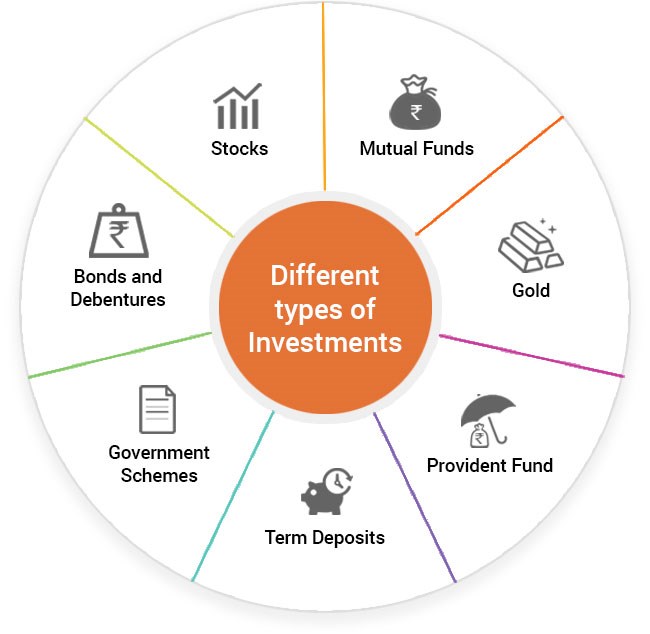For most investment companies and funds, investing in non-core businesses is a form of direct investment. In fact, they buy not only and not so much in order to receive part of the current income from owning a block of shares in a company, but also to resell it later. Such investments can provide a yield of 50% or more per annum. Provided, of course, that the object for investment is chosen adequately.
Direct investments are traditionally categorized as alternative investments. Meanwhile, for many developing economies, such as China, they act as a leading source of income, the annual “capacity” of which is estimated at hundreds of billions of dollars (here we are talking primarily about foreign direct investment). Recently, direct investment has become more and more popular in our country as well. According to the data we have, almost 40% of company owners are ready to cede a stake in their business to a direct investor.
Direct investments can be used for business development regardless of the level of development of this or that company. Now they are, perhaps, the most accessible investment tool for most domestic firms. It is worth noting that we are not considering here venture capital funds, whose strategy is somewhat different from that of the classical private equity funds.

Pros and cons of direct investments
The main advantage of direct investment is the opportunity to obtain the funds needed to implement a particular project aimed at business development. In this case, not only money is invested in the company, but also intangible resources – advice from the investor, his connections, knowledge and authority. Information that a well-known private equity fund has invested in a business has a positive impact on the image of the recipient of funds as a business partner.
Direct investment also has some significant limitations. First, the investor, who has invested funds in the company, expects to return them, having received a certain income. Moreover, the profitability of investments must be at least 30-40% per annum, for some projects higher requirements may be applied. The return of funds may be achieved by selling the stake to a strategic investor, having it repurchased by the company’s management (co-owners), or by selling it on the stock market as a result of an IPO.
Secondly, a company, which attracts a direct investor, must be prepared for considerable changes in its management system. This may involve switching to international financial reporting standards, changing the company structure in order to increase transparency, changing some of the managers (an investor representative or an approved specialist often takes the CFO position), or restricting strategic decisions (major transactions can only be made with the consent of investors).
Thirdly, when working with a direct investor, a company should be prepared to go through a complex procedure of legal, financial, technological and marketing due diligence.

Willingness to invest
If the owners of the company decide to attract a direct investor, they must assess whether the company is ready to start looking for one. The following points are important here.
Business plan. A direct investor most often invests not in a startup, but in a growing business that needs additional funds to move to a new stage of development or to implement a promising project. The description of investments should not always have a canonical form of a detailed business plan, sometimes a short description of the idea is enough. An investor will still calculate the prospects of a project for himself.
Availability of qualified management with obvious professional achievements. This is an important point for many direct investors. After all, they are not buying a business in its entirety and do not seek to participate in its operational management. They must be sure that the company’s specialists can successfully implement the project for which the money is allocated.
State and dynamics of the business – investors prefer to invest in growing companies. Only rarely will they be interested in seeing a company overcome stagnation or decline.
State of the industry. This factor is not crucial for all investors, but many of them prefer to invest in growing markets, which are not yet close to saturation.
Owners should determine at once what share of the business they are ready to give up to a direct investor. Many investors will invest in a company only if they obtain a controlling or blocking stake.
The size of a company is not crucial to attracting direct investment. Many in this market invest in small firms with annual revenues of less than a few million dollars. It is desirable that the company has no debts and other encumbrances, has documents confirming ownership of the assets, the necessary patents and licenses. Investors often negatively assess the presence of the state or criminal structures among the owners of the company, participation of the company in corporate conflicts. It is clear that a claim to the company from the tax authorities or lawsuits from third parties practically exclude the probability of successful attraction of investments.

Before the search
An investor is unlikely to come to a company on his own – this happens very rarely. It is necessary to take active steps to reach a potential acquirer of a share in the company.
Before starting the search for an investor, it is required:
- Optimize the company’s financial flows, making them as transparent as possible. This is important for the positive outcome of the due diligence procedure. For the same purpose, it is necessary to prepare consolidated financial statements, conduct audits and obtain an audit opinion, prepare the necessary legal documents (charter, agreements with counterparties, necessary licenses and permits, existing agreements with the labor collective and trade unions), optimize the personnel structure of the firm, as well as the structure of its debts.
- To prepare company description-including investment memorandum containing general information about business, information about shareholding structure, information about assets and liabilities of the company, accounting data, description of the prospective areas of investment of the funds raised.
- Decide how exactly an investor will be attracted – will he be assigned shares of the current owners, or the best option will be an additional issue of shares.
To carry out these activities, it is most often advisable to engage an external consultant, who usually has not only qualified specialists who can prepare the company for the arrival of direct investors, but also good contacts with them.

Different investors
It makes sense to consider two main groups of direct investors – private and institutional. The former include individuals (often the top managers of large companies) looking for opportunities for profitable investment of free funds, and the latter include investment groups and private equity funds. They can be formal (positioning themselves as funds, for example, Baring Vostok Capital Partners) or informal (actually operate as private equity funds, for example, Alfa-Eco).
Holding companies and groups of companies, which diversify their investment portfolios, occupy an intermediate position. On the one hand, such players differ from private individuals in their capabilities and priorities; on the other hand, direct investments are not their main activity and are one-time projects.
Working with each of these groups of investors has its own advantages and disadvantages. By definition, there are more private investors than funds, and they often have less stringent requirements for the object of direct investments. However, the benefit of cooperation with private individuals is not so great – most often they only give money without additional resources in the form of knowledge and experience. Institutional investors have stricter requirements to the company which attracts investments, but also give incomparably more. If we talk about companies which occasionally act as direct investors, their requirements and opportunities are individual.
Each private equity fund has its own requirements. For example, Baring Vostok Capital Partners, among other things, assumes that the company must break even, the internal rate of return on investment must be at least 40% a year, and the growth in the value of the company must be at least 300%. The private equity fund of the investment holding considers proposals to invest in hightech companies, entertainment companies, industries with low asset consolidation and high growth rates, as well as retail companies, first of all, operating on the consumer market and having a developed distribution network. Almost all investment funds pay attention to such indicators as company management, profitability, revenue and profitability.

Search strategy and tactics
If a company has not aroused the interest of private equity funds, and raising funds is an urgent business need, it is necessary to find an investor in the person of a corporation or a private person.
In the most general form, the procedure of searching for a direct investor looks as follows: determining the possibility and prospects of attracting a direct investor, identifying all possible options for working with a direct investor and choosing the most suitable, determining the best time to start searching for an investor (changes in market conditions and the state of a particular company), conducting preparatory measures focused on maximizing the value of the object sold and minimizing risks of participating in the direct investor’s project
The most difficult tasks for an entrepreneur who does not have much experience in attracting investors are to identify priority groups of investors and directly enter them. Our experience has shown that a three-tiered model of analysis is well-proven for identifying potential investors. At the first stage, the main players interested in direct or strategic investments in a particular industry are identified. This is done using information from industry associations, catalogs, media reviews, and specialized marketing research. Next, an analysis is made of other investors who have sufficient free funds to participate in the project. The main mechanism here is the study of publications in the media, primarily the statements of the company’s top executives regarding their plans and further development strategy, and a survey of experts. The ideal option is for the seller or his consultant to have their own analysts. This significantly reduces the time and cost of the work.
The third stage – making a short list of potential investors. Here, too, open sources are studied, experts are interviewed, and the balance sheets of the participants are studied. The players that are most likely to have insufficient free funds for the transaction, and the companies noticed to be involved in corporate conflicts or unfair competition are eliminated. It is worth noting that a company’s competitors can act as a direct investor – they know the industry well and understand its prospects, and can expect to move from the category of direct investors to the category of strategic investors over time. The players with whom the company owner prefers not to work for one reason or another are also screened out. As a result, a list of solvent companies is compiled with whom there are no excessive risks.
After that, it is necessary to establish contact with the CEOs of potential investors. It is clear that you can send them a simple investment proposal (summary of the investment memorandum). If it is properly drafted (clear positioning and unambiguous addressing to one of the top managers), it will most likely reach the manager who makes the decision to start negotiations. However, the risk that the message will remain on the desk of the middle manager or the personal assistant to the head of the company remains quite high. Reaching senior executives is easier if the salesperson is represented by an intermediary or consultant known in the investment business.

Investment parameters
After a potential investor declares his intention to invest in the company, the parties come to an agreement on the basic parameters of the investment. Here, the order in which the investment will be made plays an important role. It is necessary to determine whether the investment will be made in a lump sum or in installments, whether the size of the investment will depend on the success of the declared business project; the powers received by the investor, his rights to withdraw from the investment. It’s necessary to stipulate the way the process will be carried out: will the company owner have priority rights to buy out the investor’s stake; will a strategic investor be involved; is an IPO planned; expected mechanisms of control over the use of invested funds. It is necessary to decide what kind of additional reporting should be provided to the investor, how the profit of the company will be distributed – what part will be received by the owner, what part by the investor. Often the best option is reinvestment of profits in the development of the business – this approach allows to maximize income after the public offering or sale of the company to a strategic investor.
There are many other mechanisms of direct investment. These include the purchase of company shares (stakes in LLCs), and “mezzanine” financing (the use of financial instruments with the characteristics of both debt and equity, usually a combination of subordinated debt and stock options). Private equity funds sometimes invest in acquiring stakes in mature companies with low growth rates. The acquisition often occurs with leveraged buyouts (LBOs). More than one fund may invest, in which case each investor may agree to receive a relatively small stake of 10-15%.
